Images: Fossils Reveal Tiny Tapir and Hedgehog
Pipsqueaks
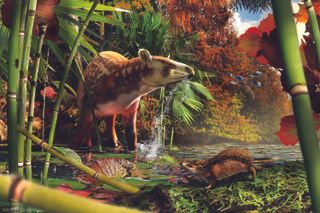
Researchers have discovered the fossils of a mini tapir and hedgehog that lived during the Eocene epoch, at a fossil site in British Columbia. During the Eocene, the world was a much warmer place. Shown here a reconstruction of an Eocene rainforest, some 52 million years ago, around a northern British Columbia lake, showing the newfound tapiroid drinking in the shallows as the small proto-hedgehog stalks a green lacewing in the foreground.
Driftwood Canyon Provincial Park
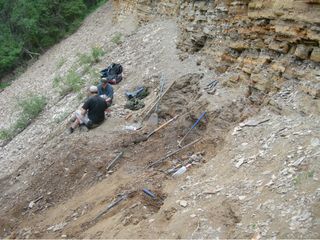
The fossils were discovered at the "North Face" fossil site (shown here) in in Driftwood Canyon Provincial Park, British Columbia, which is known for its exquisitely preserved plants, insects and fish. The duo represent the first two mammals ever discovered at this dig site, the researchers said. The hedgehog, whose name Silvacola acares means "tiny forest dweller" was discovered by accident when David Greenwood of Brandon University in Manitoba and his colleagues were quarrying for plant fossils in the lakebed shales of the park. A student in the group cracked open a rock and found a miniscule bone inside, one that was found to belong to the little hedgehog.
North Fossil Site
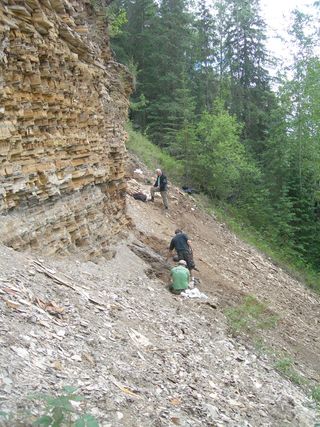
Here, another image of fossil-bearing sediments at the "North Face" fossil site (shown here) in in Driftwood Canyon Provincial Park, British Columbia. During the Eocene, Northern British Columbia would have boasted a climate similar to that of Portland, Oregon, today, with lots of rainfall; and the area would've been carpeted with a mixed conifer and broadleaf forest, where palms and spruce lived side-by-side.
Hedgehog Fossils
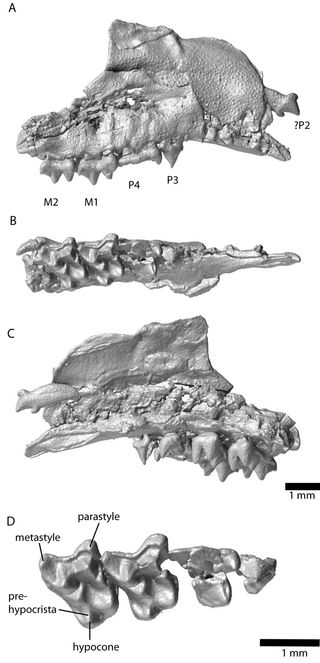
From the fossils, including a jaw and teeth, the researchers estimate the little hedgehog was about 2 inches (5 cm) long. Its molars were so small (about a millimeter long) that the researchers didn't dare chip the little jaw from the surrounding rock. Rather they scanned the rock with computed tomography. Here, a CT scan showing the hedgehog's maxilla, or the bone in the skull that holds the cheek teeth, and a close-up of the teeth (bottom image), showing two premolars (smaller teeth) and two molars.
Tapir fossils
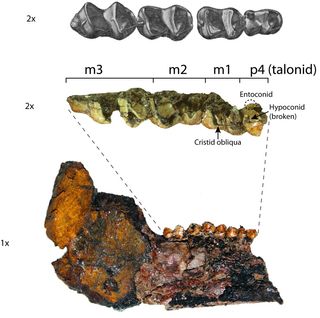
The teeth (above and middle) and a side view of the lower jaw (below) of Heptodon, an ancient cousin to tapirs, found in early Eocene rocks of northern British Columbia, dating back some 52 million years. This extinct mammal was a pipsqueak, about half the size of today's tapirs.
Tiny horse
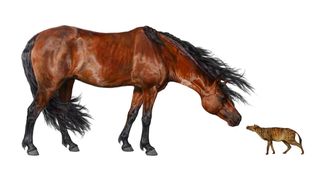
Pipsqueaks were not uncommon during the Eocene. For instance, the earliest known horse, of the Sifrhippus genus, started out the size of a miniature schnauzer (weighing about 12 pounds, or 5.6 kilograms), before shrinking to the size of a housecat, or just 8.5 lbs. (3.9 kg) during the warmest stint of the Eocene.
Sign up for the Live Science daily newsletter now
Get the world’s most fascinating discoveries delivered straight to your inbox.
